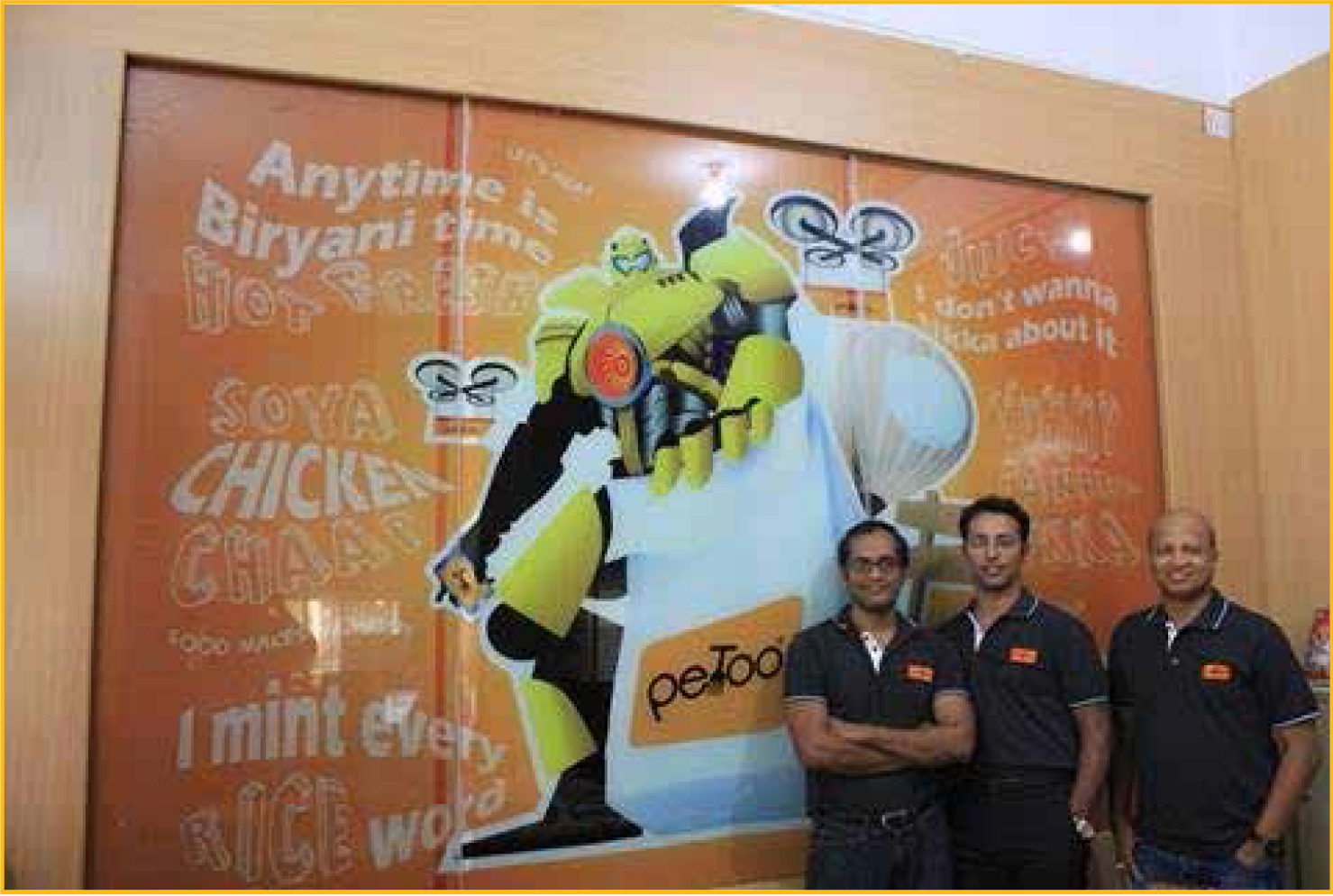In my almost decade-long association with JustEat, I have come across various challenges pertaining to the food industry. Some we tried to solve and were successful, but many were difficult to resolve as we never controlled the entire lifecycle of the order. So when I was discussing the idea of Petoo (pronounced as pay-too) with a friend, I explained to him how cool the concept was, how we would solve the current complexities pertaining to the industry, and how Petoo could be the next big thing. My friend saw reason to my madness and trusted that this indeed was something really different and not something everyone was thinking about. But he also cautioned me — we would have to plan and execute immaculately, as there were already too many people working on similar ideas in the food and QSR space, and we might not have the first-mover advantage. With more than 2 dozen Internet-first restaurants, he felt it would be a difficult road ahead. I completely agreed that growing Petoo would be extremely tough, not because of the few dozen Internet-only restaurant startups but because food is a freakishly complicated business to be in.
As far as competition for Petoo is concerned, any restaurant — small or big, Internet-enabled or non-Internet-enabled, from dabbawalas to office cafeteria, the food stall at cinema theatres or even your kitchen at home — is a competitor. Had we started Petoo two years ago, we would still have faced tremendous competition from the already-established food joints. Food is a hyperlocal business and hence no matter how big a food brand is, they face significant competition from the unorganized single outlets or even from the roadside dosa/momo stalls. Competition in food just cannot be avoided — not now and not in the past — and I don’t think it will be any different in the future. It is perhaps the only industry in which there always will be hundreds and thousands of players co-existing and even complementing each other.
While I was at JustEat, every month the sales team would sign up at least 10% new restaurants (of our entire partner estate) to join the platform. More than 50% of these new partners would have started operations just few months ago. Another interesting fact was that every month, we also lost anywhere between 5-10% of our partner restaurants, with the most common reason being closure of business. When we analyzed reasons for the closures of such large number of restaurants every month, we found that the most common reasons were:
1. Improper menu planning (eg: a QSR focusing on a fine dining kind of menu, focusing on making exotic dishes and thus reducing the addressable market size)
2. Ordinary food, ordinary service
3. Chef-depended business – Retaining staff is difficult and when a chef leaves, he takes away the soul of the restaurant
4. Not pricing dishes right – Either too low or too high
5. Not planning the cash flow properly and running out of funds within months of launch
We realized that businesses shutting down due to competition was quite rare (unless you are the 10th North Indian restaurant within a 2 km radius). Things have certainly changed in the last two years, however, with new restaurants opening up at similar if not faster rates every month. The difference now being that some of these new restaurants are Internet-only restaurants. Opening an Internet restaurant is less expensive and hence is gradually becoming the flavor of food entrepreneurs.
Petoo, however is not a ‘me-too’ restaurant. We have put in a lot of thought and used the learnings gained over almost a decade of running JustEat into Petoo. We aspire to run a food business as smartly as any other technology company. Things are easier now than they were a few years ago because we now have access to amazing technology. Harnessing technology to remove inefficiencies which are a part of the industry since ages has now become possible and has opened up many possibilities. Restaurants all across the globe have always been a real estate and peopleor-chef-dependent business, expensive to establish, and difficult to scale.
Those who managed to standardize and partly mechanise their process became big businesses and those who did not, stagnated as hyper local businesses. Our vision is to make a smart QSR which is lean, has extremely efficient processes, and offers fantastic customer experience. We have set on a difficult path but we will try our best: offering an amazing experience to our customers is what gives us sleepless nights. We certainly won’t be paranoid about competition; in fact, it is outright stupid to be worried about competition in food.
This article originally appeared here and is reproduced with permission from the author.






